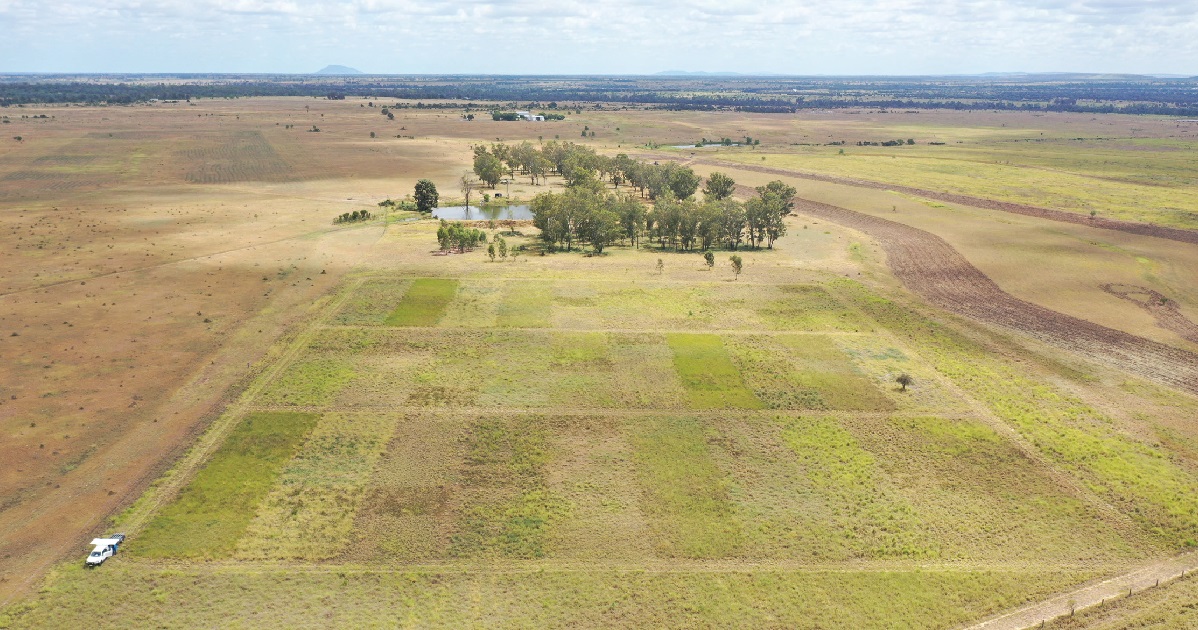Biosecurity alert - Pasture dieback
Pasture dieback is a condition that kills sown and native summer growing (sub-tropical/tropical) grasses. It begins in small patches which can grow to affect large areas, significantly reducing pasture productivity.
About pasture dieback
Pasture dieback is a condition that kills sown and native summer growing pastures. It starts as small patches and can spread to affect large areas. The grasses die allowing broadleaf weeds to colonise. Often groundcover in these areas is low. Pasture dieback is not limited by landscape or soil type. Livestock avoid grazing affected areas making them unproductive.
Pasture dieback was first identified in Central Queensland. It has now spread across Queensland in coastal and inland regions from the Atherton Tablelands to south-west of Brisbane. Suspected pasture dieback was reported on a property in northern NSW in autumn 2019. Following good rainfall in autumn 2020, the first case of pasture dieback was confirmed in NSW on the North Coast.
Mealybug is associated with pasture dieback on the North Coast, but research to date indicates that pasture dieback is not caused by a single factor, but likely a complex interaction of multiple factors and environmental factors.
To find out more about pasture dieback, visit the DPI website.

How to identify pasture dieback
Symptoms are most evident when pastures are actively growing during spring, summer and autumn, especially following significant rainfall. Symptoms of pasture dieback include:
- Yellowing, reddening and purpling of leaves. Discolouration can vary between species. Starts with the oldest leaves and typically begins at the leaf tip and moves along the leaf blade towards the stem.
- Infected plants become stunted and unthrifty. Plants have fewer leaves and tillers, smaller seed heads and a smaller root system.
- Starts as small patches, less than 1 m2. Patches grow and merge and affect large areas.
- Rapid increase in size of the infected area following significant rainfall in spring-autumn.
- Eventually the affected plants die.
- Patches where grasses have been killed are colonised by broadleaf weeds and legumes.
Recognising pasture dieback
Many of the dieback plant symptoms can be caused by a range of other factors. Including: mineral deficiency, moisture stress, cold temperatures, herbicide damage, water logging and nematodes. It is important to eliminate these before assuming dieback. However a combination of symptoms, including a rapid increase of the affected area following significant rainfall are good indicators of pasture dieback.
Download the DPI pasture identification guide.
How to report suspect pasture dieback cases
Help us identify where pasture dieback is by reporting. If you suspect symptoms of pasture dieback please:
- Contact the Exotic Plant Pest hotline on 1800 084 881
- Email biosecurity@dpi.nsw.gov.au with a clear photo and your contact details or
- Complete the online reporting form.
Resources
- Pasture dieback Primefact
- Potential spread of pasture dieback in fodder (PDF, 857.02 KB)
- Pasture dieback (MLA)
- Pasture dieback manual for producers (MLA)
- Selecting grass varieties tolerant to pasture dieback (MLA)
- Pasture dieback in Queensland (QDAF)
- Mealybug fact sheet (QUT)
- Ground pearl fact sheet (UQ/AgEtal/Agforce)
- Movento® label (Bayer) and permit (APVMA) for the control of pasture mealybug in pastures.